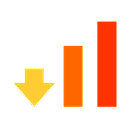What's the weather like in Fuerteventura in August
Temperature
Alongside July, August is one of the hottest months for Fuerteventura, when thousands of tourists from all over Europe descend on the island for their summer holidays. During this month, the average temperature for Fuerteventura is 25°C, created by average highs of 28°C in the middle of the daytime and lows of 22°C after dark, whereas the average temperature for Brighton is only 17°C.
If you don't love high temperatures and would prefer to visit Fuerteventura when the island is cooler, consider planning your trip for October or May, when temperatures are milder and the island is much less crowded.
Daily Temperatures
At this time of year, daily averages stay fairly constant throughout the month, generally fluctuating between 25°C and 26°C. Since the temperature is more or less the same throughout the month, there really isn't a best week to visit Fuerteventura in August the whole month is hot.
Extreme Temperatures
The hottest temperature ever recorded in Fuerteventura in August is 41°C, which was registered on August 1st 1988 at Fuerteventura Airport. The lowest temperature ever recorded here during August is 15°C, which was registered on August 16th 1981.
What's the windiest month in Fuerteventura?
August is one of the windiest months in Fuerteventura, along with July, despite the peak-season temperatures. You can enjoy a wealth of watersports during this time of the year, including surfing, windsurfing and kiteboarding.
The winds vary between 5 m/s (gentle breeze) and 10 m/s (fresh breeze). The trade winds make the breeze somewhat higher than average.
Western areas are generally more breezier than other coasts, although the wind speed does drop over the coming months.
Weather Warnings
Fuerteventura is affected by calimas throughout the year, but when they appear during the summer months especially in August they can by quite severe. The trade winds which keep the Canary Islands relatively cool usually blow in from a north easterly direction. When they blow in from an easterly direction over the Sahara desert, they create a calima. This weather phenomenon is best characterised by a huge spike in temperatures (up to 10°C higher than normal) and low visibility due to the dust and sand particles in the air. This dusty, sandy air also causes breathing difficulties for those with conditions such as asthma.
Rainfall
In August, the likelihood of precipitation falling very nominally increases as the month progresses. The probability of rainfall starts off at 3% on August 1st and rises up to 4.2% by August 30th. During this month, the island is subject to an average of 0mm of rainfall, making it one of the best months to holiday on the island if you don't want to risk rainfall spoiling your trip. If you're remarkably unlucky and do get some type of precipitation during your holiday in August, it will most likely be moderate rain (which occurs on 48% of days with rainfall), drizzle (30%) or light rain (12%).
The highest monthly rainfall ever registered in Fuerteventura in August is 3.2mm, which was recorded at Fuerteventura Airport in August 2005 proof of how little rainfall the island receives during this month. The 18th day of that month was declared the wettest August day ever, when 2.8mm of water fell on a single day. However, the August 2004 was the August which saw the highest number of wet days three.
Fuerteventura consistently sees less rainfall than any of the other Canary Islands due to its unique terrain. All the other Canaries are comparatively mountainous and when the trade winds rush over the island, they're forced over the mountains. When the winds rise, they cool down and the clouds they're moving can't hold as much water at cooler temperatures. This causes the clouds to release their water in the form of rainfall. The trade winds are never forced to rise over mountains in Fuerteventura and therefore never cool down and subsequently don't form rainclouds as often.
Average Sunshine Hours
During August, Fuerteventura boats an average of nine hours of sunshine each day, alongside median cloud coverage which says fairly constant throughout the month. Median cloud coverage starts at 30% on August 1st, before dropping down to 29% by August 13th and rising up to 31% by August 31st. On average, the sky is clear/mostly clear 37% of the time, partly cloudy 11% and mostly cloudy/overcast 8%.
Due to its geographical location, Fuerteventura enjoys mild sea water temperatures throughout the year. In August, the average sea temperature for the waters around the island is 22°C that's 1°C warmer than in July.
Humidity
The relative humidity for the island in August averages at around 71%, ranging from 59% (mildly humid) up to 87% (very humid) across the month, rarely rising as high as 100% (very humid) or dropping below 44% (comfortable). The air is driest around August 1st, when the relative humidity drops below 67% (mildly humid) three days out of every four, whilst it's at its most humid around August 27th, when it rises above 79% (humid) three days out of four.
The windiest month in Fuerteventura?
August is one of the windiest months in Fuerteventura, along with July, despite the peak-season temperatures. You can enjoy a wealth of watersports during this time of the year, including surfing, windsurfing and kiteboarding.
The winds vary between 5 m/s (gentle breeze) and 10 m/s (fresh breeze). The trade winds make the breeze somewhat higher than average.
Western areas are generally more breezier than other coasts, although the wind speed does drop over the coming months.
Winds
Over the course of an average August, wind speeds throughout the island vary between 4 m/s (gentle breeze) and 9 m/s (fresh breeze), rarely rising above 11 m/s (strong breeze). The highest average wind speed of 7 m/s (moderate breeze) occurs around August 1st, when the average daily maximum is 9 m/s. On the other hand, the lowest average wind speed of 6 m/s (moderate breeze) happens around August 31st, when the average daily maximum is 9 m/s. The strongest wind ever registered in Fuerteventura in August is 22 m/s, which was recorded at Fuerteventura Airport on August 10th 1992.
Summer is the windiest season of the year for Fuerteventura, because this is when the north easterly trade winds are at their strongest. These winds pass over the Canary Current before they reach the island, helping to keep Fuerteventura pleasantly cool, even during the summer months.
Fuerteventura Hotels in August
Hotel Elba Carlota Beach & Convention Resort
Hotel Elba Carlota Beach & Convention Resort is another top pick for travellers interested in sport, located next to the 18-hole Fuerteventura Golf Club. If golf isn't your thing, there are loads of other things to keep guests entertained, too, including the Sinatra Entertainment Room which hosts regular shows, the Gran Casino Antigua which can be accessed directly from the hotel and Chiringuito la Isla bar just a short walk away on the beach.
There are also two outdoor swimming pools, Jacuzzzi, gym, internet room, souvenir shop, kids' club and Thalasso Spa located in the neighbouring Sheraton hotel. All guests can also enjoy Balinese beds and waiter service at the beach which is just a stone's throw away. The four-star hotel provides accommodation in the form of standard double rooms, junior suites and standard family rooms, many of which come with sea views.
Barcelo Jandia Playa
Just opposite Jandía beach, you'll find Barceló Jandía Playa. This four-star hotel has been awarded with the Thomas Cook Marque of Excellence and boasts a comprehensive all-inclusive programme which covers breakfast, lunch, dinner, snacks, drinks, beach transfers, swimming pool, sauna, hydromassage pool, gym access and loads of sports facilities. For the little ones, the all-inclusive programme also covers the use of a kids' pool and the mini club.
Guests can choose between double rooms, family rooms, deluxe rooms and suites, all of which are decorated in a sophisticated, minimal manner and many of which offer direct sea views. If you stay in one of the deluxe rooms, you'll be able to enjoy the Barcelo+ programme, which includes access to an exclusive restaurant with sea and pool views, plus unlimited all-inclusive access to all drinks including premium spirits from all hotel bars.
R2 Rio Calma
The R2 Rio Calma is a 4-star hotel located on the beachfront in Fuerteventura, with spectacular views across Grandes Playas de Jandia beach. Built in a colonial style, this hotel features 384 rooms divided between singles, twins, doubles, triples, quadruples, suites and royal suites. The basic rooms feature a neutral colour décor with colonial-inspired furniture, whilst the suites also offer a separate living room and direct sea views.
The spa is the jewel of the hotel, where you'll find massages services, chocolate therapies, water treatments, relaxing baths, cosmetic treatments and a hair salon. Other onsite highlights include outdoor swimming pools, gym, boutiques, minigolf, garden and WiFi access, plus one restaurant, piano bar, coffee shop, lobby bar and buffet breakfast restaurant.
Fuerteventura Beach for August
El Moro
El Moro is a golden sandy beach located in the north of Fuerteventura, close to the Dunas de Corralejo Natural Park. It measures 560m long by 45m wide, meaning you'll always find the perfect spot to lie down your towel, even during the busy month of August. The only down side is that the surf is very strong and dangerous, which means that swimming is out of the question most of the time.
However, there is a lifeguard on duty and safety flags are displayed, so you know when the sea is calm enough to swim safely. If you do decide to take a dip here, keep an eye out for surfers, because they often take advantage of the strong surf. There are no sun loungers, shade or food kiosks on the beach, so you'll need to take everything with you you'll need for the day.
Cofete Beach
If you're searching for peace and quiet, you're sure to get it at Cofete Beach. Situated 800m away from the mountains of Jandia, this beach stretches on for 2-3km along the coast, which means you'll rarely see another soul whilst there. Since the winds are always blowing here, the golden sands often get whipped into the air, so see if you can find some large rocks to make a windbreaker to protect you.
Unfortunately, the sea is unsuitable for swimming, having dangerous currents and high waves, since the beach is very open to the north easterly trade winds and the strong Atlantic current. This being said, the beach is still an ideal place for a quiet bit of relaxing and enjoying the beautiful surroundings! You won't find any tourist amenities here, so you'll need your own shade, food and drinks.
Things to do in Fuerteventura in August
Kitesurfing
August is arguably the best month of the year for kitesurfing in Fuerteventura. In fact, the conditions are so superb during this month that the PWA Kiteboarding Slalom and Freestyle Grand Slam are regularly held on the island in August. Majanicho beach in the north of the island is one of Fuerteventura's top kitesurfing locations, with flat to choppy water close to the bay which transforms into ideal waves when you get out into the sea and pass the main reef.
Since there are many sharp rocks around this area, protective footwear is recommended and only experienced kitesurfers should practise here. Winds range between 16 and 22 knots are generally strongest between noon and sunset, making the afternoon the optimum time to go.
Rocky Point in the north of the island, just outside Corralejo Harbour, is a great place to practise kitesurfing. The left wave which is a touch further out than the right is suitable for long and short boarders, but does require you to paddle far out. On the other hand, the right hander is closer to Corralejo town and the shore, making it much easier for novices to access. Although the sea floor is very rocky, this spot is still suitable for beginners.
Surfing
If you're not interested in kitesurfing, how about ordinary surfing? The optimum time for surfing in Fuerteventura is September to December, when the easterly and southerly winds are at their strongest, but conditions are still fantastic toward the end of August, when the winds are changing.




























